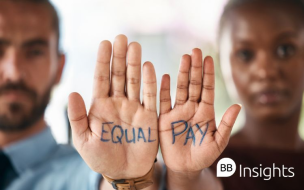That isn’t because women lack the skills to be successful in this sphere—far from it.
In fact, we are seeing more women making their mark in tech such as ChatGPT’s creator and chief technology officer at OpenAI, Mira Murati, and Nicola Fox, who has just been appointed as NASA’s first female head of science.
However, biases entrenched within the industry widely exclude and limit women from progressing to leadership positions, or even deter females from entering the tech field at all.
In 2023, less than 2% of VC funding was allocated to exclusively female founding teams. In leadership teams of Big Five US tech firms —Alphabet, Apple, Meta, Amazon, and Microsoft—women make up less than 9%.
As the tech sector is facing a rise in layoffs in 2024, women are reportedly nearly twice as likely than men to be affected.
So, why is there a problem with gender diversity in tech? And what can companies do to increase representation? We spoke to experts from top business schools around the world to find out.
What biases are causing a lack of gender diversity in tech?
The tech industry demands a workforce of analytical problem-solvers, innovators, and risk-takers—ideas that are in opposition with socially constructed female stereotypes that are entrenched in society.
Daniela Lup, professor of organizational behavior and human relations at ESCP Business School, believes the root cause of the problem of gender diversity in tech comes down to such stereotypical biases against women.
“When left unchecked, these negative biases are exercised regularly enough that these perceptions become practices embedded within the workplace culture,” she says.
One such bias surrounds the belief that women are more risk averse than their male counterparts.
In an industry such as tech where innovation and risk-taking are highly valued, this can be detrimental to progression, explains Sreedhari Desai, professor of organizational behavior at University of North Carolina’s (UNC) Kenan-Flagler Business School.
“While women are stereotyped in this way, when they do behave in risk-seeking ways, they are caught in a double bind and are penalized. There’s a backlash against women for violating gender stereotypes,” she adds.
In a workplace culture where mistakes made by women are more heavily scrutinized and visible, the performance of women can be assumed as less effective than their male counterparts.
Aneeta Rattan, associate professor of organizational behavior at London Business School, considers how female performance is evaluated in her research into the kindness bias.
In her research, she finds that the stereotype that women are ‘warm’ leads to kinder feedback from both male and female colleagues.
“It can actually be problematic to have this overly positive wording because it’s less constructive and actionable,” she says.
Aneeta also notes that despite women receiving this softer form of feedback, they often do not receive a pay review or promotion, which prevents salary negotiation conversations.
“All members of underrepresented groups have an additional challenge because they don’t just receive biases, they have to worry whether the way they’re being treated is because of their identity or performance,” she says.
Women of color often experience workplace biases even more acutely than white women.
According to research by Accenture, only 21% of women said they believed they could thrive in a career in tech, a number which falls drastically to 8% for women of color.
As a result of the negative workplace culture and lack of progression for women perpetuated by these biases, a stark number of women leave careers in tech.
“There is this impenetrable glass wall that women see in the tech sector,” says Sreedhari.
A study found that 50% of women leave careers in tech by the age of 35 and leave at a 45% higher rate than male colleagues.
For women entering the industry, there is a noticeable lack of female role models to look up to, which can lead to a vicious cycle of a lack of gender diversity in tech.
Even in fictional representations, women are eclipsed from the image of a successful tech industry. A study found that just nine out of 116 artificial intelligence (AI) professionals in popular films are depicted as women.
Why is gender diversity in tech important?
The tech industry is evolving at a rapid pace and has the power to change lives—but only if it takes into consideration the lived experience of everyone in society.
“By not having women at the table when products are designed, you lose that entire population in your customer base by not making products suitable for them,” says Daniela from ESCP.
For example, the development of AI has been fast evolving, but the tech has often perpetuated a strong gender bias.
If you listen to any automated AI bots and voice assistants—Siri, Alexa, Cortana—these all traditionally have default female voices, reinforcing the stereotypical image of women in an altruistic, helpful, caregiving role.
When Amazon first introduced AI in its hiring process, the tech learned to see male candidates as preferable as it assessed applications in accordance with those matching previous, mostly male, employees. This led to the AI-driven process being scrapped in 2017.
"The pace at which products and services are launched in tech means women can’t just be part of a focus group, there has to women at the table through the entire pipeline of the product,” says Daniela from ESCP.
Elon Musk—one of the most controversial and powerful names in tech—criticized ChatGPT’s developer, OpenAI, in 2023 for designing the chatbot with features to prevent sexism and racism.
With women at the helm of innovations in tech, the result can be more inclusive products and services.
For instance, when co-founder of dating app Tinder, Whitney Wolfe Herd, was forced to leave the tech company due to harassment, she was inspired to create a space that gave women agency and prioritized their safety.
This led to the creation of one of the first female-focused dating apps, Bumble—an app that’s innovative in allowing women to make the first move. After launching in 2021, the app is now worth $1.4 billion.
What measures need to be taken to increase gender diversity in tech?
Tech companies have a responsibility to make gender diversity a priority—and the good news is, some companies are listening.
Since 2018, Apple has launched the Apple Entrepreneur Camp with a focus on supporting founders who are female, Black, Latinx, or Indigenous.
However, Sreedhari from Kenan-Flagler advises looking out for ‘diversity washing’ from certain companies with stark underrepresentation of women in the ranks.
“The outward focus seems to be significantly brighter and more polished than what is actually happening within the organization,” says Sreedhari.
If companies are going to increase diversity, equity, and inclusion (DEI) efforts, organizations need to turn the focus inwards.
Malia Lazu, lecturer in innovation and inclusion at MIT Sloan School of Management, argues that change sits at the top of the hierarchy.
“Until people with the power to exclude decide not to, [DEI] measures will not work. Ultimately, if the company culture doesn’t change, you won’t be able to increase representation of women in tech,” she says.
This includes unravelling the biases that make the working environment in tech a negative and limiting space for women.
Daniela says that while DEI training and becoming aware of biases is a positive step, there needs to be follow up steps that will make a difference.
“Companies need to be purposeful about creating a climate of inclusion through training that creates motivation and concrete strategies for behavioral change,” she says.
This also needs to be tackled at business schools, including strategies to reduce the gender pay gap.
“It’s important to build awareness among students at business school that they could be acting with unconscious bias towards women and other minorities, and that’s when harmful behavior can be so powerful because it’s habitual,” Daniela says.
The current instability in the tech sector is driving the need even further for diversity of perspectives. Yet until actionable steps—involving the dismantling of assumptions about women and supporting women to enter careers in tech—are taken by companies, business schools, and even at an earlier stage in the education pipeline, there is no knowing how long it will take to fix the issue.
This article was first published in March 2023 and updated in March 2024.







